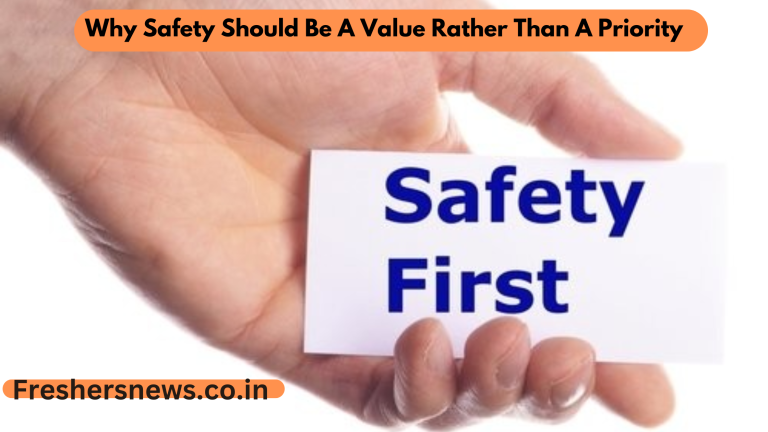Cases of workplace incidents and accidents that happen every day include broken bones, burns, falls, and issues with mental health. They not only have an impact on the worker directly, but also on their friends and family. But the battle goes on since mishaps and incidents can also seriously harm company morale, a company’s reputation, and its ability to make money. An incident at work, no matter how minor, can hinder productivity, demoralize staff, and raise absence rates.
Maintaining safe operations should be viewed as a competitive advantage rather than a burden. Putting money into a health and safety system gives your business security and defense against such mishaps, accidents, and dangers.
What Would Happen If Your Company Lagged in Health and Safety:
Your organization and its employees may suffer serious and very real consequences if health and safety procedures and practices are neglected. These might be anything from monetary loss to the loss of life. Following are a few cases of disasters that happened as a direct result of health and safety violations:
- The West Fertilizer Co. Explosion, West Texas: Firefighters and rescue workers among the 14 individuals died in the explosion for failing to notify unsafe chemical storage practices and other safety concerns.
- The Deepwater Horizon Oil Spill in the Gulf of Mexico: Another reminder about the terrible results of noncompliance. Eleven persons died as a result of several hazards that were disregarded and neglected.
While poor health and safety precautions may not always result in such large-scale disasters, even minor incidents can have a huge impact on your company. According to the UK’s Health and Safety Executive (HSE), for example, stress, depression, and musculoskeletal disorders will represent the majority of days lost due to work-related health conditions in 2020. Workers with these conditions take an average of 17.6 days off work, with an additional 8 days for workplace injuries. An injury or illness could potentially result in the permanent loss of employees.
The following are listed as benefits of a strong health and safety system by the HSE and the Occupational Safety and Health Administration (OSHA):
- Reduced costs
- Reduced risks
- Lower employee absence
- Higher morale
- Fewer accidents
- Lack of legal action
- Reputational benefit
- Increased productivity
It does not take a major accident at your workplace to understand that your employees are worth protecting. Every year, 2.78 million work-related deaths occur, with 2.4 million attributed to occupational diseases, according to the International Labour Organization.
The Cost of Accidents:
Accidents have two costs: money and human lives. They also have direct and indirect consequences. Medical treatment, fines, and sick pay are examples of direct costs, while indirect costs include lost productivity, overhead, and workers’ compensation pay.
According to a HSE study, the hidden indirect costs of an accident can range from 10-36 times the direct expenses. Failure to implement proper safety practices can lose your company money and reputation, as well as turn away potential clients and incur costs.
How To Make Safety A Part of Your Business Culture:
Don’t let safety exist in the sidelines, but instead invite safety into the core of your business. Here are four ways to achieve this:
- Enhance Communication: Create lines of communication within your firm that allow employees to communicate their health and safety issues in a safe environment. Allow health and safety to be discussed on a daily basis.
- Create a Reporting Process: Provide your workplace with a dependable and simple reporting system that puts employee health and safety in their hands.
- Train Your Employees: Make training and learning opportunities available to your employees. Ensure that everyone in your office is up to date on the current rules and protocols and understands what measures to take in the event of an incident. Ensure that training is delivered on a regular basis and is not limited to sporadic lectures.
- Examine, Review, and Reflect: Set up regular reviews of your health and safety system to ensure that it is working properly for your firm. Don’t be hesitant to examine your system’s existing operations and consider whether more may be done to protect your personnel.
Don’t worry, you don’t have to do all of these steps by yourself. A health and safety software can assist your organization in creating a safe environment. CloudApper Safety may help you streamline your procedures, create a platform for accurate and simple reporting, and spark discussions around health and safety.
Make Health and Safety a Value, Not a Priority:
Here’s the thing: we don’t think you shouldn’t prioritize health and safety; it’s just that priorities shift. Priorities shift in response to external influences and demands, whereas values stay unaffected. Any variety of developments can force an organization’s processes to be rethought and restructured. This could lead to a decline in health and safety.
We believe that health and safety should remain a core value at your company. Maintaining an unwavering commitment to providing a high level of health and safety will ensure that the quality of your health and safety process does not degrade. By leading by example, your staff and customers will realize that health and safety are just as important to your company as marketing or sales. Your incident and hazard rates will fall, and your operations will run more smoothly overall.
Investing in CloudApper Safety EHS software now will help your company to experience immediate savings on accidents, incidents, and downtime.



0 Comments